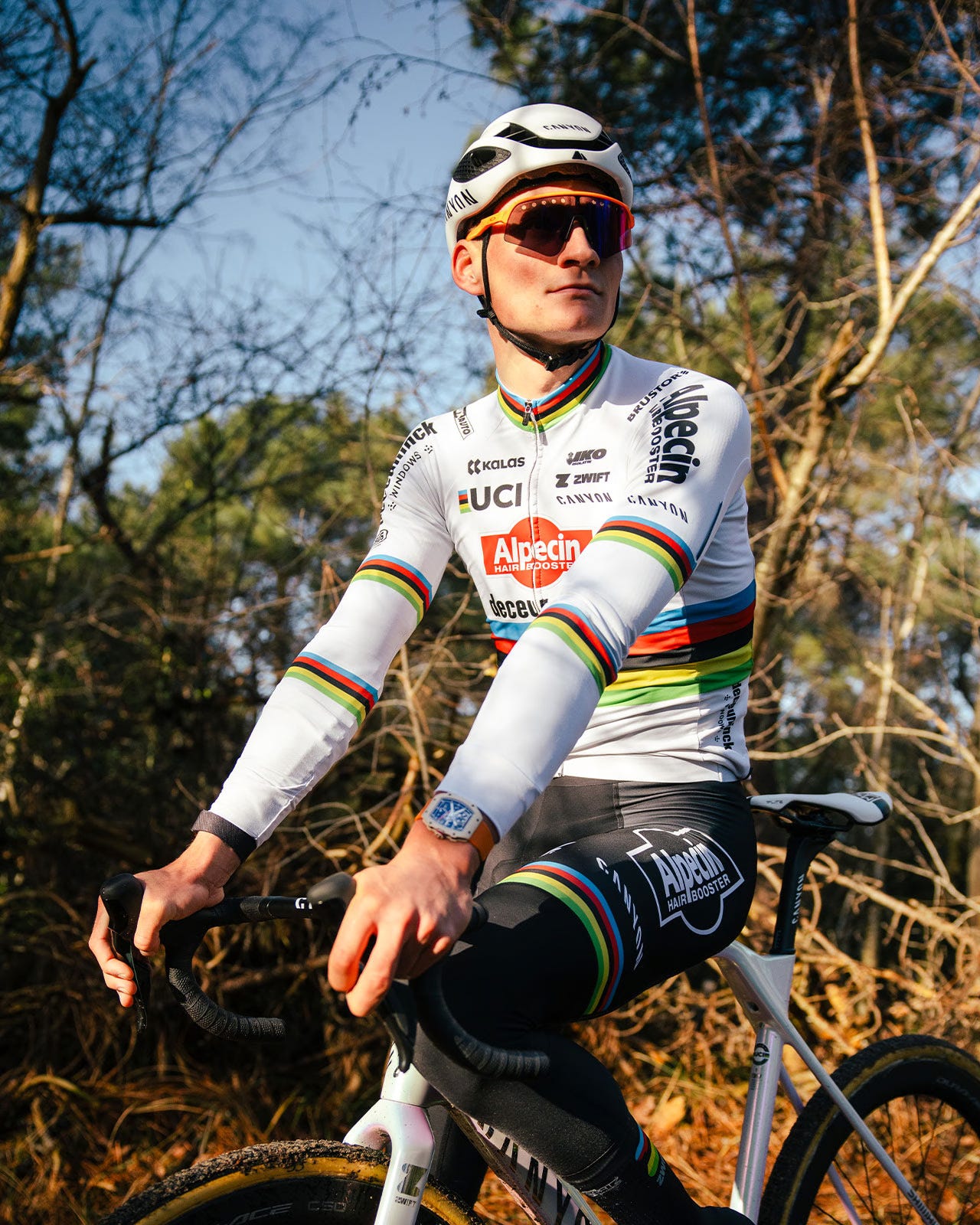Athlete Ambassadors, The Tiers of Independent Watchmaking, and What Richard Mille Sees in Professional Cycling
Has Richard Mille's Approach to Racing Built an Unstoppable Force?
When I first got into riding and racing bicycles I was obsessed with the professional peloton - I wanted to ride the same bikes, follow the same training plan, and have all the same kit as my favorite riders. I am not sure if this was a folly of youth, but I did own a Discovery Channel Professional Cycling Team frame from Trek complete with Shimano Dura Ace. I wasn’t particularly fast, but that bike made me feel fast and that made it special. While I grew out of that phase, I still admire what the men and women in the pro pelotons and on the velodrome and trails are capable of, and I still wish I was fast.
I don’t follow as closely as I once did, but I still love watching the Spring Classics, the Tour, and it makes me wish I was riding more than I am. But Richard Mille has taken this to a new extreme with a whole host of cyclists now in their athlete ambassador stable, and I want to understand what RM is getting out of cycling. Is it that professional cycling is the pinnacle of human powered racing and an RM is a racing machine for the human powered engine? Is it greenwashing to move away from the environmental havoc of motorsport? Is it that anyone willing to spend $20,000 on a road bicycle probably has the disposable income to buy and RM to feel like their heroes? Is it Richard’s love of racing in any format and being awed by the riders risking it all to race flat out in a group sprint?
What is RM getting out of their relationship with professional cycling?
Making History
On July 3rd, 2024 Sir Mark Cavendish, a British cyclist, sprinted into history at Le Tour de France, winning 35 stages over his career, and setting a new record for the most stages won by an individual rider in the Tour’s 111 edition history. He was previously tied for the record with 34 stage wins, which was set by Belgian rider Eddy Merckx in 1975 — and went unmatched until Cavendish tied the record in 2021.
Why do I care? Aside from the obvious sporting achievement, Sir Cavendish wore a Richard Mille RM67-02 on his wrist while sprinting his way into history.
After Cav crossed the finish line, his RM 67-02 is visible on his wrist and can be seen as he hugs teammates and fellow riders after the stage. Later in the 2024 Tour, eventual winner Tadej Pogačar could be seen wearing a Richard Mille RM 67-02 with a yellow strap to match is yellow jersey (the leader’s jersey).
There was a perceptible shift occurring in the pro peloton - mechanical watches had made their entrance in a big way. Tudor, of course, sponsors the Tudor Pro Cycling team, but something about RM coming into the sport made a big splash. And much like the Richard Mille Logo on a Formula 1 livery, that very same logo started popping up on the bicycles of pro peloton and the watches on the wrists of riders.
Richard Mille made another big splash last weekend in France at the cyclocross world championships as an RM 67-02 adorned the wrist of one of the best riders in the world, Mathieu Van der Poel (MVDP). MVDP might be famous for riding for Canyon bicycles or for his all too familiar Oakley eyewear, but over the weekend he sported some new wrist candy. With a Whoop fitness device on one wrist, his other was adorned by an RM 67-02. MVDP had just signed with Richard Mille the week prior to winning his 7th Cyclocross World Champions Title. That 7th title ties him for the most rainbow jersey’s ever won in cyclocross - and puts him on the precipice of making history with an 8th title next year.
Van der Poel has also won the Road Cycling World Championship, winning a rainbow jersey on the road in 2023, and the Gravel World Championships in 2024, earning him a rainbow jersey in three disciplines of cycling, and I wouldn’t be surprised if he goes for a mountain bike world championship. This is the type of pedigree Richard Mille is looking for - world champions in their discipline that will inspire fans to purchase the same watch as their heroes. And in MVDP they have a world champion in multiple disciplines, and at 30 years old, a still long career ahead in the pro peloton.
With his signing, MVDP joins the likes of Tadej Pogačar, Mark Cavendish, and Julian Alaphilippe in the cycling world as ambassadors.
Cycling is a sport with global appeal, but I don’t think it will reach the levels of Formula 1 or football. Sure, viewership will be large in certain countries, but that is all Richard Mille needs. Their ambassadors are their marketing campaigns. Because of MVDP and his 7 finger winning salute, there will certainly be an uptick in interest in the watch - even if just looking to understand the appeal.
I would speculate that Mathieu’s contract includes a handful of new watches a year, a discount on anything else he wants to purchase, and access to the entire RM catalog. It would not surprise me to see him sporting some other heavy metal off the bike.
This is the playbook that RM has employed since 2004 with the signing of Felipe Massa, the Brazilian F1 driver. In 2008 Mille would go on to sign Rafael Nadal. Mille has a habit of spotting talent, befriending athletes who are at the top of their game, and working with them. For him, based on what I understand, it’s more about a friendship and a shared passion for sport, watches, technology, and in many cases going fast. As a marketing case study, it’s a case of putting watches on the right wrists and Mille has been fortunate to do that.
Last week RM gained another important ambassador aside from Van der Poel. With his signing to Scuderia Ferrari, Richard Mille now has his watch on the wrist of Sir Lewis Hamilton. At his debut in Monza as a Ferrari driver, Hamilton was seen rocking the RM 67-02 “Italy” on none other than a red strap - one must be appropriately dressed for the Tifosi.
It is rumored that both Hamilton and his teammate, Charle Leclerc, will both be sporting custom pieces from RM this year, with Hamilton wearing a RM 74-02 in red gold and black gold carbon TPT, and Leclerc wearing a 72-01 in titanium and red gold.
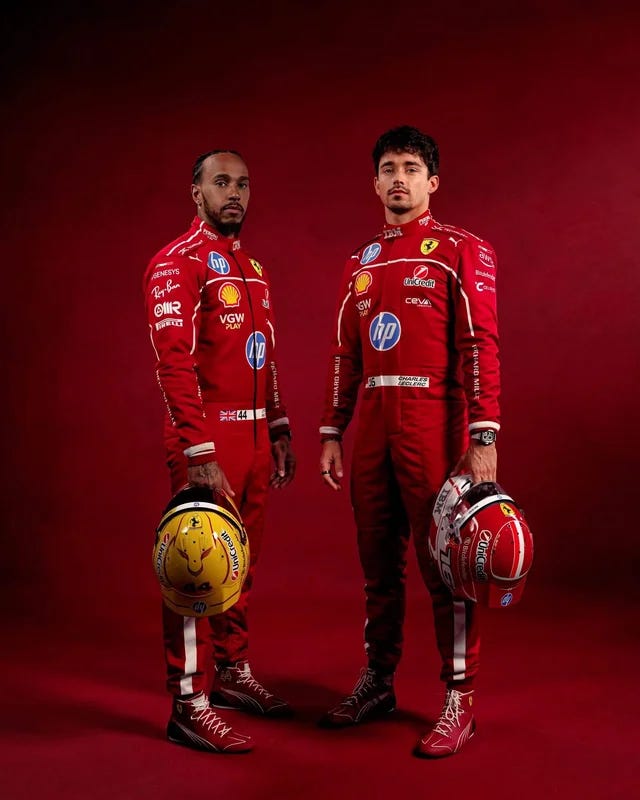

Richard Mille launched his brand looking to convince the world that luxury could be lightweight, and that a racing machine for the wrist was the future of the watch industry. I certainly believe he and his eponymous brand have succeeded in convincing the world that luxury can be lightweight — many other brands have created a titanium watch and are working hard to create watches in other lightweight metals, and now carbon fiber can be found across the watch industry.
Technical Precision
To me, the partnerships between cyclists and Richard Mille are obvious, Just like those in motorsport, sponsors spend massive amounts of money to participate in the sport and hope that their team performs- there are technical aspects, but much of the racing is about the drama on and off the bike, the highs and lows of a season of racing and training, the thrill of victory, and the crush of defeat.
There is an emotional storytelling component to this that helps the watch brands sell. There is also a pull at nostalgia — that if we own the same bike and the same watch that our heroes who win stages at the Tour de France and win races on a grand tour level — well, we might achieve some of that glory vicariously through them. If not, we might just have some cool shit on our wrists.
The connection between watches and cycling can be explored through the passion for each, the technical performance of the components that make a whole, or the level of both science, mathematics, and artistry that both encompass. There’s a level of human ingenuity in each, and that gets explored by watchmakers pushing the level of what’s possible in both materials and technical performance, and riders pushing above and beyond their capabilities, telling their legs to shut up, their lungs to take on as much air as possible, and pushing as many watts as possible to cross the finish line first.
Whether you prefer the storytelling or the celebration of technical achievement, both Richard Mille watches and the bicycles of the pro peloton offer a technical and aesthetic beauty, and I think the watch world is just beginning to discover the depths of the passion of cyclists, and the lengths they will go to to be like their professional heroes, regardless of their innate capabilities.
While the average sale price of a bicycle remains at $700 USD, and may seem a far cry from the six-figure starting price of most of Richard Mille’s watches, there is certainly an enthusiast segment of market that will stop at nothing to have bikes ridden by the pros often with a base MSRP of $10,000 USD and increasingly closer to $20,000, there seems to be no shortage of capital in the cycling world. There aren’t that many arenas in life in which one can access the best in class, but cycling remains one of those areas where we can continually chase this phenomenon.
The average price of a bike has nearly doubled in the last two decades. When I worked in a bike shop, spending $8,000 USD on a bicycle was insanity. It meant you had all the latest and greatest tech, titanium bolts for everything, and had one of the craziest bikes on the road. Inflation, materials and new technology (think power meters being standard fare) have all played a role.
Modern race bikes have become a bit like Formula 1 cars - frames and concepts spend more time in the wind tunnel than in any previous era in cycling. Shapes are constantly refined, rim depth and width is constantly tinkered with to match a frames aerodynamic performance. Bolts are made from titanium to shave weight, every advantage is sought to be at or just over the Union Cycliste Internationale (UCI) bicycle weight limit of 6.8 kg, or 14.99 pounds.
In short, cycling had become a technical race and the goal was lightweight. Cycling has always been about pure racing, but with a new breed of cyclist and a new breed of frame designers and aerodynamicists working on the bikes that are raced in the pro peloton, everything is about racing and winning. And that idea of building an out and out racing machine is exactly what appeals to Richard Mille, who sought to build a racing machine for the wrist. In the cyclists he sees modern athlete ambassadors at the pinnacle of human powered racing. They have the same spirit and drive as their motorsport counterparts, except they are the engine.
And that is exactly why Richard Mille cares about cycling. It is a new sport in which to engage clientele. In a sport where a top end racing bike can top out at a little over $20,000 USD, the marketing minds at Richard Mille have found untapped potential in the legion fans of cycling, in any of its disciplines. Richard Mille himself likes go-fast things, so cycling makes total sense. His athlete ambassadors do the heavy lifting in the marketing campaign.
Marginal gains is the key in cycling, much like in Formula 1. The racing doesn’t quite reach F1 speeds, but there is a lot of technology, chasing marginal gains, and carbon fiber bits for Richard Mille to stick their logo on. And these athletes are some of the best in the world on the bike, so the exposure is pretty much guaranteed. And what RM can now use in their marketing briefs is the concept of marginal gains - that they are slowly and surely working with some of the fastest human powered athletes on the planet to refine and leverage marginal gains to build the lightest and most accurate time keeping devices they can.
Will they is another question.
Like F1, R&D and material development has advanced cycling in exponential ways. Bikes today are better than the bikes 20 years ago. They are now multilayered, highly engineered systems. Often, large bike manufacturers are engineering bikes and their components to work together. A bike can be optimized to be the most aerodynamic, the most responsive up hills or the most responsive in corners when engineered as a system. It’s why manufacturers are vested in the development of wheels, frames and the cockpit. It’s a system.
On one hand, bikes are inexpensive when compared to other passion pursuits. A boat or a race car makes a $18,000 bike seem inexpensive. And for some with a more restrictive budget, $18,000 is a reach but it affords them an opportunity to have the best in category and to be on the same system as their idols. The rest is simply nuance. One such nuance is choosing a small independent bicycle builder, much like an independent watchmaker, whose cost is rooted in the labor and hours, and their maniacal attention to detail.
Richard Mille isn’t the bespoke builder. They are more like a manufacturer of aerodynamic carbon bikes. They don’t produce one off machines, but rather hone shapes and movements to meet their desires, or use cases that come up in the course of working with their athlete ambassadors.
I am hoping what RM will lean into cycling, work with riders to develop a shape and a case that is both ergonomically comfortable, and aerodynamic. I’d love to see them develop something unique for their athletes, and release it to the broader public. I could see a future in which they launch different versions in yellow, green, white, and red polka-dots to replicate the leaders jerseys of the Tour de France. A boy can dream…
Big Brands Vs. Independent Brands & the Three Tiers of Independent Watchmaking
I believe that what Richard Mille has accomplished in watchmaking and building a brand is nothing short of incredible. And I also think it’s worthwhile to talk about the tiers of independent watchmaking, and where a brand like RM fits in.
In the context of my Where is Collecting Going in 2025? I talk about the split between big brands and independents. I wasn’t sure at the start of the year if we were headed into an era where independent watchmaking would still enjoy the position of primacy it has, or if the big brands would come to their senses, clean up their SKU count, and get back to making desirable watches.
What I see happening here in professional sports with Richard Mille, in particular cycling, is incredibly important. Let me come back to this in a moment. For now, let’s talk about the tiers of independent watchmaking. I believe there are three tiers that comprise independent watchmaking and can help brands, collectors, journalists, and retailers speak in the same language about independent watchmaking.
The three categories that exist within independent watchmaking are independent artisanal watchmaking, industrialized independents, and independent brands. This trifecta covers everything from the singular watchmaker alone in their atelier to more established brands that have been promoting and pioneering modern independent watchmaking. These three tiers represent the vast majority of the independent watchmaking space.
1. Artisanal Independent Watchmaking
I would argue that any brand producing less than 500 watches annually qualifies as independent artisanal watchmaking. Within this group there is a great deal of nuance, ranging from an independent watchmaker who makes most of their own components, buys only components they cannot fabricate, or it makes no sense to fabricate, and focuses on hand-crafting as much of a watch as possible. This definition stretches to a brand that makes every component and has few suppliers, or who has purchased one or two suppliers. At this level, artisanal watchmakers have the highest opportunity for self-expression, for really crafting a view on time and timekeeping to differentiate themselves from everything else on the market.
Examples include: De Bethune, Greubel Forsey, Kari Voutilainen, MB&F, Rexhep Rexhepi, Romain Gauthier, Sylvain Pinaud, Urwerk, Vianney Halter, etc.
2. Industrialized Independents
In the industrialized independent tier, you have brands that have grown from smaller workshops to brands that are producing 500 to 10,000 watches annually. These brands are still innovative and very talented, yet produce more watches annually than a smaller workshop might.
In many cases, this is accomplished through acquisition of suppliers, continuing to build, grow, and scale their team over years. To do this, the watchmakers and their team have to have a desire to grow and the demand to grow. This in no way, shape, or form takes away from their independent spirit or the quality of their watchmaking. In fact, this level often allows for further innovation and experimentation because there is just more capital available for research and development.
At this level, many of these companies are also supplying other brands with components. H. Moser & Cie. is a great example of this, with their company Precision Engineering in house, they develop and manufacture many of their own components, but also supply other brands.
Examples here include F.P. Journe, Richard Mille, H. Moser & Cie.
3. Independent Brand
At the independent brand stage, these are companies that produce 10,000 watches or more annually. These brands are not held by a larger group, they remain creatively and financially independent and have the ability to produce many more watches than other independents because they have either been privately held for a long time and grown, continued to scale and built their sales channels, and appeal to a global base of collectors.
Examples: Patek Philippe, Audemars Piguet
Richard Mille Vs. the Goliaths
Richard Mille falls into the Category that I call Industrialized Independents. They produce somewhere around or about 5,500 watches annually, so they aren’t necessarily scarce, but their combination of controlling supply and vetting collectors (buyers) has afforded them a market in which they can allocate watches to the wrists they want them to be on. They are also capitalizing on sport watches for active people, or those who want to signal that they are active and athletic in their daily lives. Recent changes to the product lineup has seen more watches that are in sizes for women and it is clear that RM is moving beyond simply marketing to men on a ‘boys with toys; style of marking campaign.
Richard and his team have done an incredible job of selling a story and convincing the world that luxury is lightweight. By leveraging athletes across sporting disciplines as ambassadors for the brand, Richard Mille continues to open the world of watches up to those who may never have held an interest in watches. They have not only sponsored athletes in mainstream sports like tennis, soccer, and motorsport, but they have sponsored athletes in more obscure sports like track and field, polo, biathlon, sailing, and, of course, cycling.
It’s this love of oddball sport that is propelling RM forward.
But in an era where I am still trying to make heads or tails of who will win in the current climate of the watch industry, Richard Mille presents an interesting case. No longer a small independent brand, it is safe to say that Richard Mille is mainstream. No, they don’t produce what one might consider a traditional watch, and the are, make no mistake, exorbitantly expensive, but they do change how people thing about watches.
But, what Richard Mille might have unlocked is a formula, albeit one that has taken two decades to play out, but a formula that allows them to produce 5,000+ watches and sell through their inventory. They have managed to keep secondary prices high, and demand for these watches remains strong.
Rather than become a behemoth, they have chosen to keep production small, which, in and of itself has allowed them to grow and to make some crazy watches. What this tells me is that their might be a way forward here that isn’t a future of big brands, but perhaps a future of industrialized independents. The individual independent watchmakers can’t produce enough watches to satiate demand, and as such may see collectors lose interest. The independent brands have too many references and try to play to multiple markets and address multiple aspects of the watch community.
Richard Mille has remained solely focused on sport watches and luxury being lightweight, with the occasional special movement developed for their watches. Using athletes to market their products creates demands across sporting genres, from motorsport, to golf, to tennis, and cycling. Mille has leveraged relationships to sell his products, and the fact that they are good enough for these athletes means they are likely good enough for us, if your bank account supports such a purchase.
A Little History
Richard Mille certainly has the ability to make watches that look like they go fast. They have also worked with Audemars Piguet, Renaud, et Papi (APRP), a part of Audemears Piguet and the brain child of two former Audemars Piguet Employees Dominique Renaud and Giulio Papi. Renaud and Papi left AP after realizing that they would not get to work on complicated watches until they reached the 20 year mark in their career. They didn’t want to wait. They wanted to work on those complications as soon as possible to learn, grow, build skills, and eventually make better and more complicated watches.
What started as a movement development laboratory for paying clients would turn into a breeding ground for the whose who of modern independent watchmaking. Robert Greubel, Stephen Forsey, Bart and Tim Grönefeld, Carol Forestier-Kasapi, Andreas Strehler, Peter Speake-Marin, Anthony De Haas, and Stepan Sarpaneva. Although these watchmakers have since moved on, there is a legacy of innovation and building the unthinkable at APRP, and brining crazy ideas to reality. APRP did the prototyping for Richard Mille’s first watches, and if employed, could certainly come up with something amazing for the cycling community.
With their singular ability to focus on creating a racing machine for the wrist, partnering with incredibly talented watchmakers, and exploring with materials to convince the world that luxury can be lightweight, I think that Richard Mille may have found a loophole in the watch industry.
By being an industrialized independent with a production just north of 5,000 watches annually, all with a price point starting at six figures and going north from there, the brand creates cashflow to partner with athletes and gain market share by using the folks we idolize to sell their products. In this era of independent watchmaking versus big brands, perhaps the medium sized industrial independent with a singular focus will be the winner.
MB&F, BVLGARI, The Serpenti, and LVMH is Serious
Yesterday MB&F launched the second installment of their 20th anniversary celebrations in collaboration with BVLGARI, releasing a new version of the Serpenti. The piece launched in three materials, titanium with blue hour and minute domes, PVD coated stainless steel with red hour and minute domes, and 18k rose gold with green hour and minute domes. These will be limited to 33 pieces in each material with a retail for PVD stainless steel and titanium set at CHF 132,000, and 152,000 for the rose gold edition.
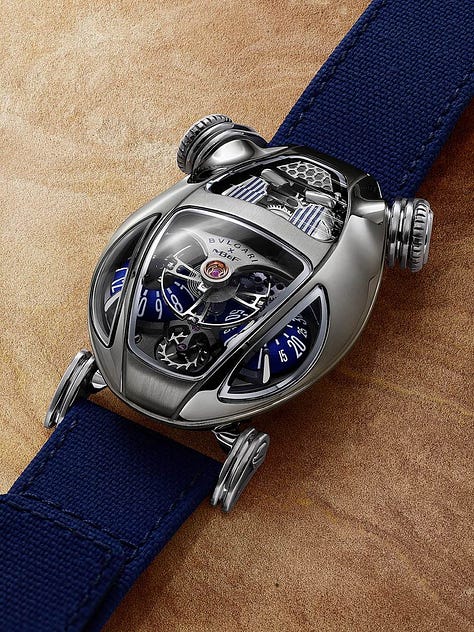
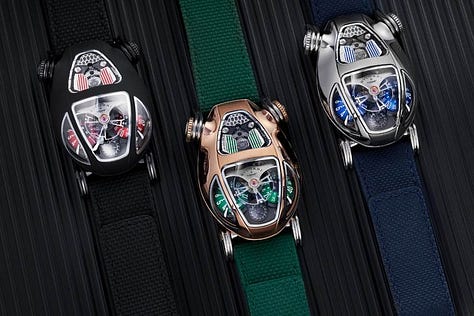
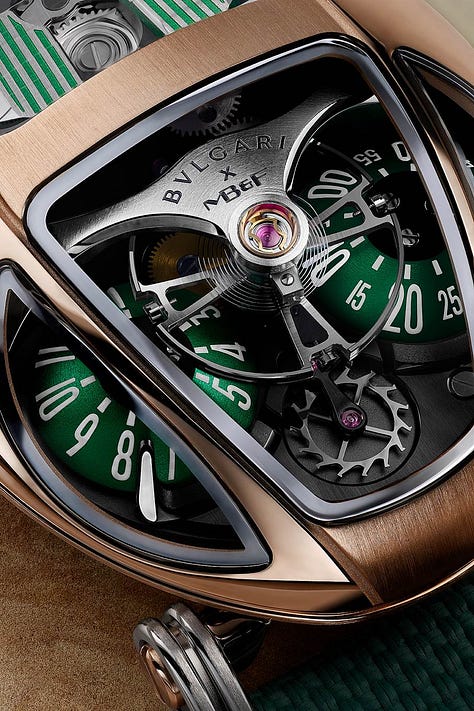
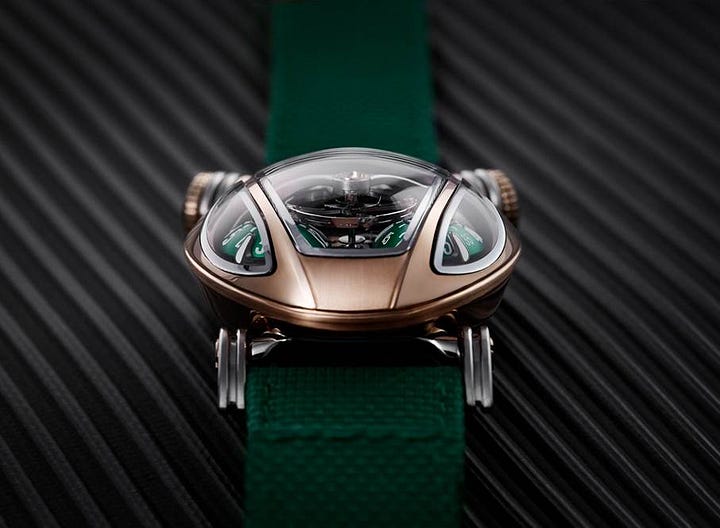
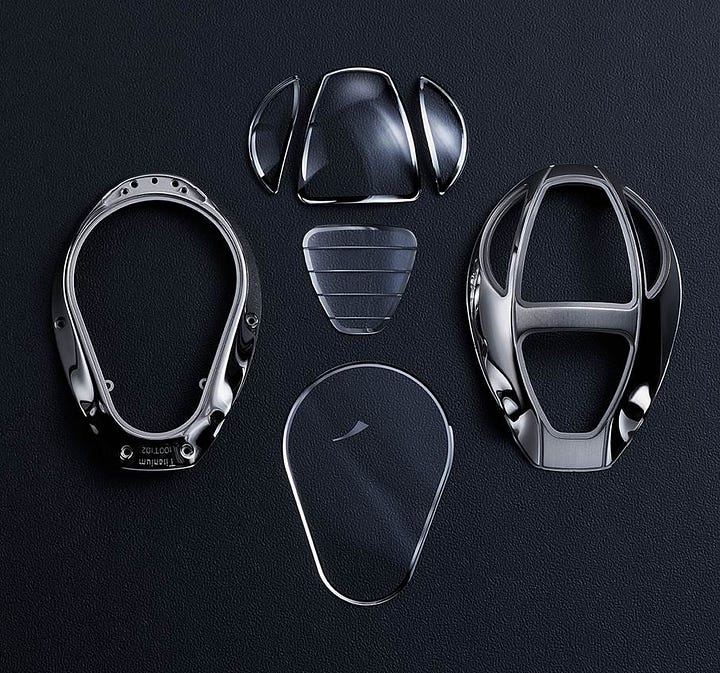
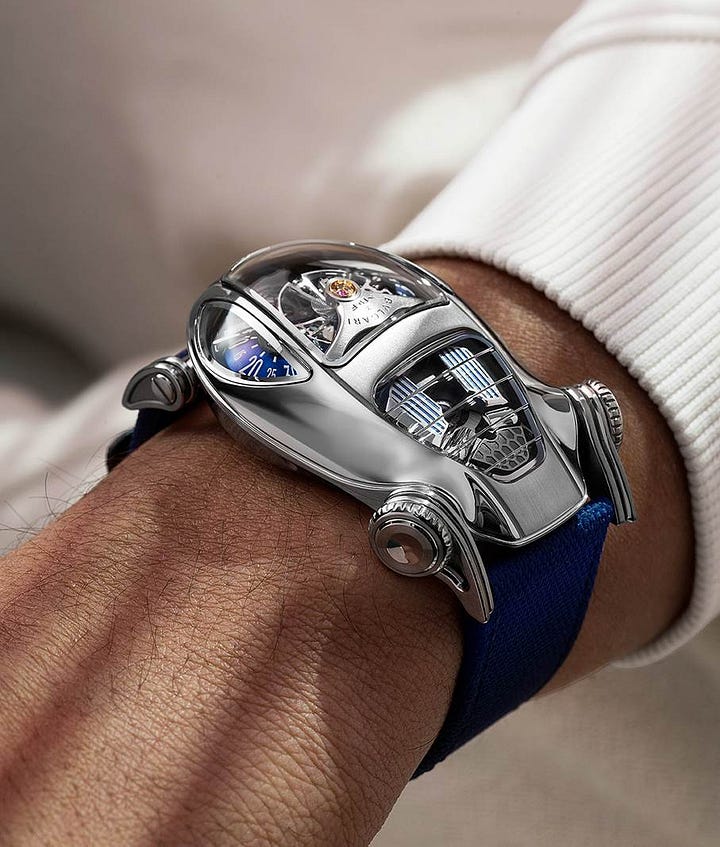
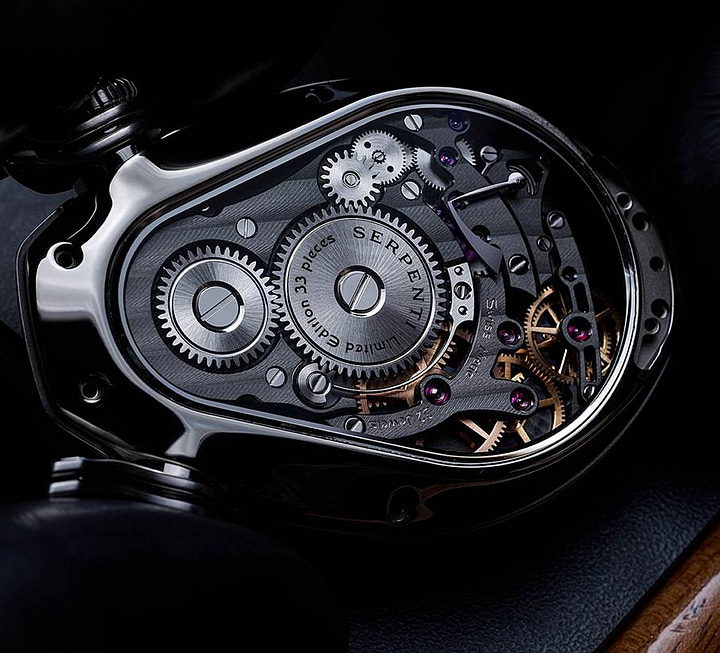
It’s easy to draw comparisons between this watch and the MB&F HM10 Bulldog - some even calling this the “baby bulldog.” I can see it, but I can also see something else afoot.
In my last post, I wrote about the Serpenti and the newly launched automatic movements for the watch - a change from the traditionally quartz watches in smaller ladies sizes. But LVMH has caught on to the fact that women are also collectors, and want watches with automatic movements. With the launch of those new Serpenti editions, and this collaboration with MB&F, LVMH is showing that they are serious about watchmaking.
I see it here on three fronts. First, LVMH is serious about collaborations with independent brands, and the Arnault family may just be serious about rebooting the Opus Project and working with indies to bring amazing watches and watchmaking to a wider audience. Second, LVMH is serious about its female collectors - it wants to offer more interesting movements across the range of women’s watches, which have traditionally been an afterthought in the watch industry. Third, LVMH is serious about watchmaking - looking at these releases they are getting serious about producing movements in all shapes and sizes, and I wouldn’t be surprised if we started to see refreshes across the suite of LVMH watch brands removing quartz movements and replacing them with mechanical movements. It’s a bold strategy - but one that I think will pay off beautifully for the holding company if they can work at pace across all brands. Time will tell.
Whether you love it or you hate it, you have to give it to MB&F. We are two months into the year and they have already released two special editions (the Longhorns) and now a new collaboration Serpenti. We haven’t event gotten to Watches & Wonders yet. That signals to me that MB&F have plenty more in store for the rest of their 20th anniversary celebration and that we should expect something monthly - but I am also thinking that we should expect big things at Watches & Wonders, or shortly before, and the same for Geneva Watch Days. I’m curious to see what MB&F bring to the table in the rest of the year.
I am also curious to see where LVMH pop up next - they certainly aren’t waiting until Watches & Wonders to release updates, so I imagine that we will see some more refreshes before April.
That’s it for this week! As ever, thank you for reading and thank you for sharing this post with anyone who might be interested or who is at least a little watch curious, or with the cyclist in your life.
My approach is to tell stories of watchmaking, particularly independent watchmaking, and share insights, interviews, and thoughts on how the market and the industry are eveolving. If you are new here, I’d love it if you would subscribe, and if you are already a subscriber it would mean the world to me if you would pledge your support - every subscriber and comment fuels me to keep writing, and I look forward to sharing content with you all every week.
Stay tuned for a second installment coming before the end of the week!





